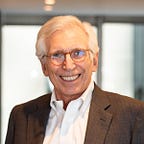The Social Media Mirage
Social media is undoubtedly among the most important additions to the distribution of information since the advent of cables and the telephone. Anyone anywhere can instantly disseminate ideas, ostensibly to the entire world, by typing in a few lines or even a whole book. And it is a truism that with the exception of the most egregious hate speech or falsehoods, social media accepts everything.
The reality is that, for most of us, social media actually reaches an audience that is probably a fraction of what you imagine it to be.
As a book publisher, I decided last year to do my best to understand how the social media system works. In my view, missing out on this newish media universe is a form of 21st century illiteracy.
It has always been held that the best promotion of new books is popular word-of-mouth. When it comes to virality, social media is the ne plus ultra. My goal was not to figure out the technology — engineers have developed that in their language. The controlling force are algorithms — “the process or set of rules to be followed in calculations or other problem-solving operations…” I barely got through calculus.
Instead, my intention was to navigate three of the most commonly used social media sites — Facebook, Twitter and Medium — with the goal of learning how to use them effectively. There are, of course, a great many others that I did not explore.
I revived a column heading called “Platform” the name of a regular piece I wrote from 2006 to 2014, which for a number of years appeared on the homepage of Atlantic.com. It went on Medium as “Peter Osnos’ Platform” with an attractive logo. It is edited by a freelance colleague and launched every two weeks or so. I enjoy the writing — what I call brain exercise (this is one) which allows me to shape my thoughts rather than just blurting them out to friends and family.
Over time I amassed 1,134 “friends” on Facebook, nearly all of them were invites to me. Another 535 requests went unanswered because I didn’t recognize the names or couldn’t figure out who they were. As a book person, I concluded that many of these friends were people who were publishing books or had proposals in mind.
On Twitter, the last time I looked I had 328 followers and on Medium, an even smaller number, meaning that on the global scale of social media influencers, I am a very, very small player.
So last week I did a test. I posted on Facebook and Twitter the stickiest thing I could think of:
“Over 30 years ago, when she was a graduate student, I had lunch with Mary Trump at the request of DJT’s executive assistant. What was he like at Thanksgiving I asked? ‘Do you mean crazy Uncle Donald?’ she replied. This book has been a long time coming.”
It was my sushi lunch. I was literally the only person other than Mary herself (who I haven’t seen since) who could disclose this intriguing fact.
And then I watched to see the responses from my 1,134 friends — those connected with me by choice, a great many of whom I have never met. As of Wednesday, 59 people had reacted to the item, with two cursory comments. On Twitter there was not a single response.
Whatever else this post may have been it was not obscure or out of the news flow. When I checked the names on Facebook, they were all, for want of a better word, regulars to my occasional feed, a total of about five percent of the list I have accumulated. I have seen some people advocating a work-around with a paste into your feed that is meant to unlock it. I’ve tried that gimmick. If anything changed it was temporary.
I now recognize — it is common knowledge among the digital cognoscenti — that the audience is the people who the algorithm decides actually want to hear from me. On Twitter, the lack of a single response would suggest that no one among the 328 followers I supposedly have was moved to react to “crazy Uncle Donald.”
This was not a Medium piece but the statistics there show that over time, several of the columns have received over 1000 views, with a read rate around 40–50 percent. I like to say I have dozens of devoted readers.
What is my point? Celebrities with tens of millions of followers and friends can expect to draw a crowd. For the rest of us, Facebook and Twitter are in charge of the outreach. The social media platform therefore is a mirage. It has value but should not be — and tends to be — exaggerated for impact and engagement. So do post if there is something you want to say — but do not assume that this is much more than what used to be thought of as a telephone party line.
